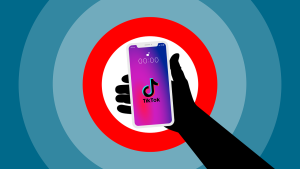Author: Luis Blanquez
The first part of this article discussed the Dai v. SAS Inst. Inc case, where plaintiffs alleged the inference of a horizontal agreement by the group of Hotel Operators using IDeaS’s software. There, the Northern District of California again confirmed the difficult standard for algorithmic pricing at the motion to dismiss stage. More specifically, the Court highlights (1) how important it is to provide enough facts about the nature of the information shared with the software provider, (2) the way defendants share such information, and (3) to what extent that same information was later commingled and integrated into final pricing recommendations.
In this second article, we dive into the first appellate decision in the US dealing with algorithmic pricing, and the recent Greystar Settlement, where the company agreed to stop using algorithmic pricing tools that rely on non-public data from competitors and to avoid participating in RealPage-hosted meetings with other landlords.
I. Gibson v. Cendyn Group, LLC, 148 F.4th 1069 (9th Cir. Aug. 15, 2025)
In Gibson v. Cendyn Group, LLC et al. plaintiffs alleged two Sherman Act, Section 1 violations:
- First, defendants engaged in a “hub-and-spoke” antitrust conspiracy by agreeing among themselves to purchase the license to the same revenue management software products from Cendyn and to abide by Cendyn’s pricing algorithms recommendations.
- Second, the hotels’ individual licensing agreements with Cendyn—”in the aggregate”—had anticompetitive effects in the form of artificially inflated prices for hotel rooms on the Las Vegas Strip.
The District of Nevada dismissed both claims. On appeal, plaintiffs abandoned the hub-and-spoke claim.
The Ninth Circuit held that plaintiffs failed to state a claim under Section 1 of the Sherman Act by alleging that competing hotels independently purchased licenses for software that provided pricing recommendations. The Court explained that alleging that several competitors contract with the same software service provider, followed by higher prices, was insufficient to state an antitrust claim under the rule of reason.
In addition, the Court highlighted the fact that Section 1 of the Sherman Act requires a causal link between the agreement and an anticompetitive restraint of trade in the relevant market, which is something plaintiffs could not show. This is similar to the case in Cornish-Adebiyi v. Caesars Entertainment, Inc., currently on appeal before the Third Circuit, where according to the district court, plaintiffs failed to show that the algorithmic software used competitors’ nonpublic, proprietary data to provide pricing recommendations.
The Ninth Circuit focused its analysis on the allegations that the individual license agreements between each hotel and Cendyn restrained competition “in the aggregate” and led to higher room rates on the Las Vegas Strip.
The Court addressed the nature of the licensing agreements between Cendyn and individual competing hotels:
- The Court distinguished between parallel conduct and concerted action, highlighting how competitors may independently adopt similar technologies without getting involved in a conspiracy. So, an agreement among hotel defendants to follow Cendyn’s pricing recommendations would have harmed competition. But here, the agreements only imposed obligations on Cendyn and each specific hotel as to each other (not the hotels together). And allegations of mere parallel conduct—competitors independently adopting similar policies around the same time in response to similar market conditions—or even involving consciously parallel conduct, are insufficient to state a claim under Section 1 of the Sherman Act, without more. In addition, the licensing agreements did not require the competing hotels to follow Cendyn’s pricing recommendations, nor imposed any restrictions on their ability to use alternative pricing tools.
- Even if hotel defendants had been aware of their competitors’ use of Cendyn’s software products, their independent adoption of Cendyn’s software products—absent evidence of an agreement among hotel defendants to do so—would have been insufficient under the abandoned hub-and-spoke claim. The Ninth Circuit also clarified that this analysis might have changed if plaintiffs had shown that Cendyn shared confidential information from each competing hotel among the licensees. But plaintiffs did not allege that Cendyn pooled, shared, or used the confidential information provided by any of the competitor hotels into the pricing recommendations it generated for any other hotel defendant. Rather, plaintiffs just alleged that each user provided Cendyn with non-public pricing and occupancy data, which the software product then used in their algorithms to generate recommendations.
- Absent a horizontal conspiracy, alleging the existence of several licensing agreements resulting in higher prices was insufficient to have a collective restraint of trade under Section 1 of the Sherman Act. Antitrust law provides no mechanism by which courts can evaluate the independent agreements between Cendyn and each hotel competitor “in the aggregate,” for the purposes of determining whether together they acted as an unreasonable restraint of trade.
- In addition, according to the Court, those independent agreements between Cendyn and each hotel competitor were also not vertical agreements. Cendyn operated in the same industry (the hotel industry) but not in the same market (the market for hotel-room rentals on the Las Vegas Strip). While hotels had the ability to use Cendyn’s software, the software was not an input going into the production of hotel rooms for rentals. Cendyn’s services did not render Cendyn “up the supply chain” from Hotel Defendants in the market for hotel room rentals on the Las Vegas Strip. Like a tax adviser the Court analogized, Cendyn’s revenue-management software products merely served a “back-office” function.
- The Court therefore held that such agreements were just ordinary sales contracts that did not restrain trade in the relevant market. They imposed obligations on Cendyn and on each hotel defendant as to each other for the provision of and payment for the software products. But they didn’t limit competition among hotel defendants in the relevant market, nor their abilities or incentives to compete.
II. Realpage, Inc. Software Antitrust Litigation – First Settlements
In August 2024, the DOJ alleged that RealPage violated Section 1 and Section 2 of the Sherman Act.
Under Section 1, the DOJ alleged that RealPage’s revenue management software was collecting competitively sensitive data from landlords, while generating rental pricing recommendations. At the same time, those same landlords agreed to share such information with the understanding that their competitors would do same thing and receive pricing recommendations.
Under section 2, the DOJ alleged that RealPage leveraged landlords’ data to maintain a monopoly in the commercial revenue management software market by using exclusionary conduct.
 The Antitrust Attorney Blog
The Antitrust Attorney Blog












